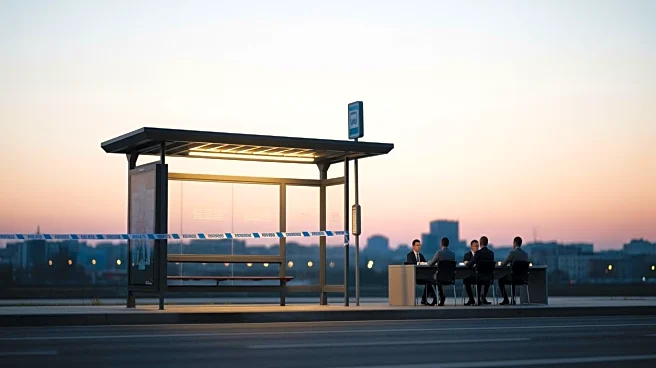What's Happening?
A newly constructed 'floating bus stop' near Shrewsbury railway station has been found to be non-compliant with national standards, according to a BBC analysis. The design, which was completed last month,
has been criticized for its narrow waiting area that does not meet the Department for Transport's recommended minimum size. The bus stop has been labeled dangerous by motorists and disability campaigners due to its proximity to a cycle lane, which poses safety risks for wheelchair users and pedestrians. The design was altered during construction due to unexpected underground utilities, resulting in a buffer area narrower than planned. The National Federation of the Blind of the UK has called the design discriminatory and is advocating for its removal.
Why It's Important?
The controversy surrounding the Shrewsbury bus stop highlights significant concerns about public safety and accessibility in urban planning. The design's failure to meet recommended standards could endanger vulnerable groups, including wheelchair users and the visually impaired, who rely on safe access to public transportation. The issue underscores the importance of adhering to safety guidelines in infrastructure projects, especially those funded by government grants. The widespread criticism and petition for removal reflect public dissatisfaction and could influence future policy decisions regarding urban transport design.
What's Next?
A cross-party Shropshire Council committee is set to investigate the bus stop project, with findings and recommendations expected in the spring. This investigation may lead to changes in the design or complete removal of the bus stop. The outcome could also prompt a review of similar projects and influence future infrastructure planning to ensure compliance with safety standards. Stakeholders, including disability advocacy groups, are likely to continue their campaign for safer and more accessible public transport solutions.
Beyond the Headlines
The Shrewsbury bus stop issue raises broader questions about the ethical responsibilities of local authorities in urban planning. The voluntary nature of compliance with Department for Transport guidelines suggests a need for stricter enforcement to protect public safety. Additionally, the project highlights the challenges of balancing modern infrastructure needs with the preservation of accessibility for all citizens, particularly those with disabilities.











